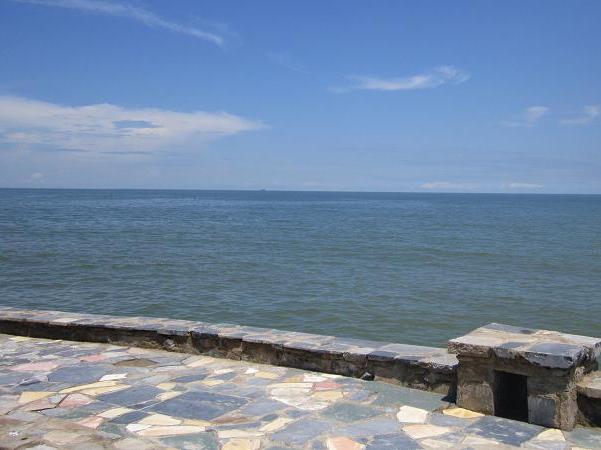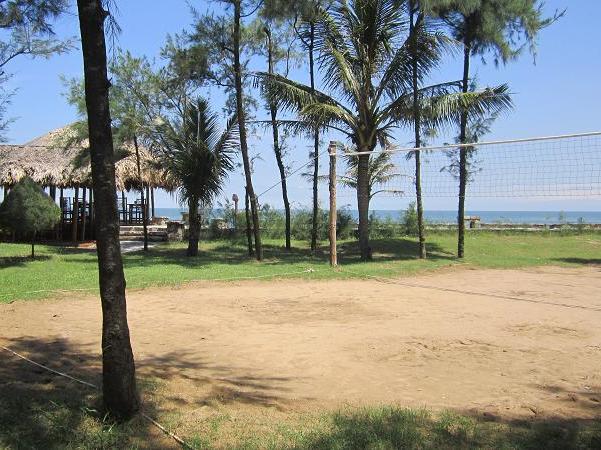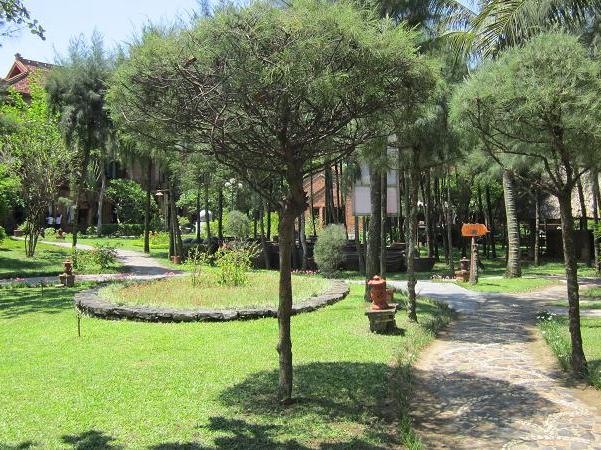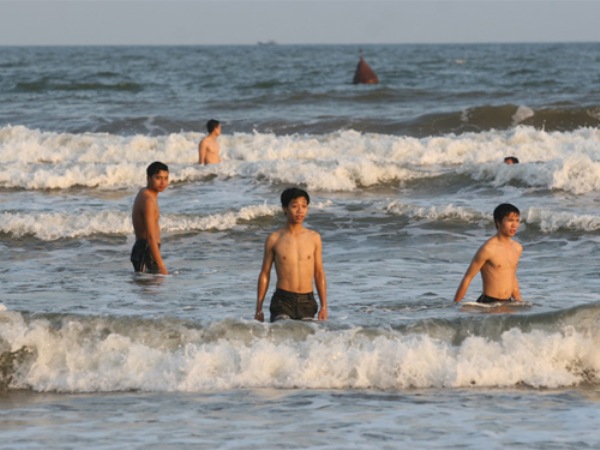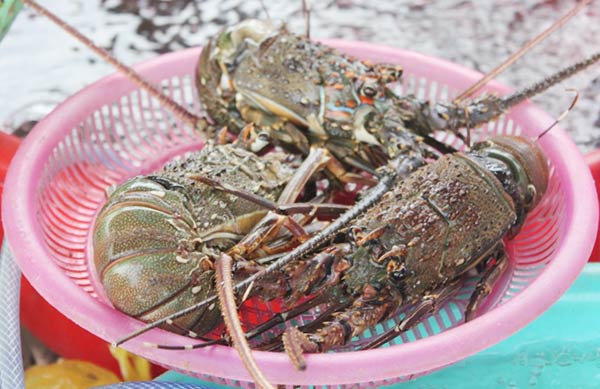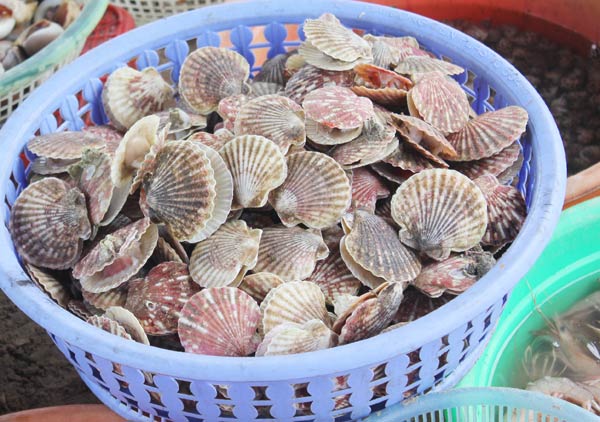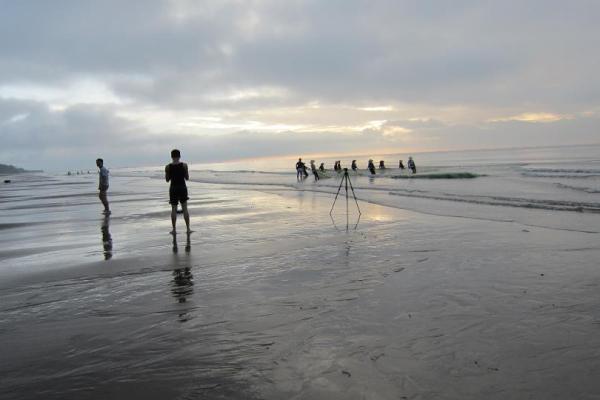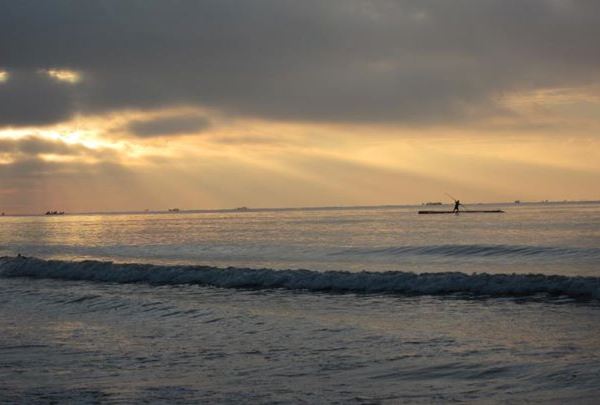Quan Lan Island located in Quang Ninh Province ’s Van Don Island District is endowed with many favourable conditions, such as forests, sea, historical architectural works, cultural characteristics, etc. The island still retains its primitive beauty that attracts both domestic and foreign tourists who like discovering the deserted areas.
Imprints of a trade port in the past
After three hours cruising on the Bai Tu Long Bay from Van Don Port, we saw Quan Lan Island with its white sand banks appearing on the sea in the curtain of mist. When the ship landed, we were very excited and eager for the island adventure and we were guided by enthusiastic locals on the island.
After three hours cruising on the Bai Tu Long Bay from Van Don Port, we saw Quan Lan Island with its white sand banks appearing on the sea in the curtain of mist. When the ship landed, we were very excited and eager for the island adventure and we were guided by enthusiastic locals on the island.

Quan Lan was the first trading port of Vietnam built by the Ly Dynasty (11th century). Many vestiges of the ancient port together with relics of foundations of ancient architectures, such as water wells and a layer of broken ceramic and porcelain pieces, some metres thick, found at Cai Nang Wharf confirm the fact that the port was once very animated and prosperous.
It is the place where the locals annually hold the offerings ceremony to King Ly Anh Tong (1138-1175) and the boat-rowing festival in May and June according to the lunar calendar.
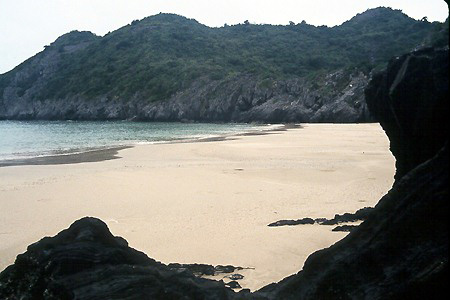 We visited Quan Lan Communal House to see with our eyes the delicate art of carving with various designs. The images of dragons are carved lively with different shapes, such as the dragon flanking a moon, a dragon keeping the “Tho” (longevity) script in its mouth, a dragon rolling water, a daisy turning into dragon, etc. Also, images of silk moths and shrimp in the dynasties of Ly, Tran, Le and Nguyen are also skilfully depicted because the trade of growing mulberry and raising silkworm and seafood catching once strongly developed in the area for Vietnam tourism.
We visited Quan Lan Communal House to see with our eyes the delicate art of carving with various designs. The images of dragons are carved lively with different shapes, such as the dragon flanking a moon, a dragon keeping the “Tho” (longevity) script in its mouth, a dragon rolling water, a daisy turning into dragon, etc. Also, images of silk moths and shrimp in the dynasties of Ly, Tran, Le and Nguyen are also skilfully depicted because the trade of growing mulberry and raising silkworm and seafood catching once strongly developed in the area for Vietnam tourism.
Another special feature of the communal house is that it was built with Man lai wood. The plant only grows on rocky Ba Mun Island near the Cai Lang trading port. Over the past hundreds of years, the communal house’s pillars remain intact and free of worm and termite infestation.
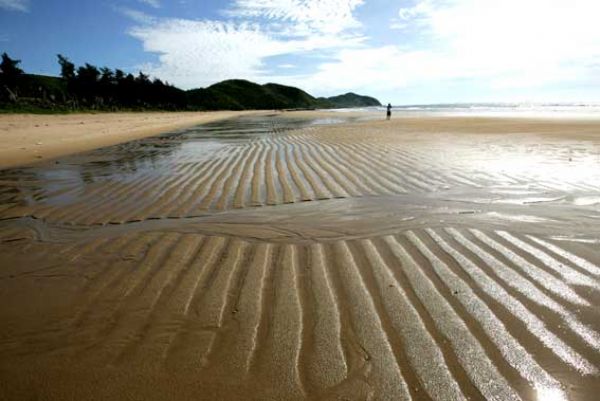 Primitive beauty of beaches
Primitive beauty of beachesOnce visiting Quan Lan Island , tourists can not help participating in sea tours and sporting activities on the sea and discovering the traditional cultural features of the locals. To get there, tourists will pass over endless white sand beaches in Van Hai area that have been famous since the 1950s and now are the material source for the national glass and crystal industry.
It is not wrong when many people said that Quan Lan is like a princess who is waiting for a kiss from a prince to wake up. The area boasts two beautiful natural beaches, including 3km-long Son Hao and 2km-long Van Hai, which are most attractive to tourists. The beaches here slope gently to the sea with soft white sand and vast poplar forests.
 At sunset, Quan Lan became deserted and there were only some tourists on three-wheel taxis returning to their hotels on the only small road on the island and a few motorbikes passing by. When night falls, the scene is very romantic with the whistles of the poplar forests, calls of seabirds, soft and low whisperings of waves flapping on the seashore. From a far, the light from ships on the sea to catch cuttlefish reflects on the sea, creating a dreamlike landscape.
At sunset, Quan Lan became deserted and there were only some tourists on three-wheel taxis returning to their hotels on the only small road on the island and a few motorbikes passing by. When night falls, the scene is very romantic with the whistles of the poplar forests, calls of seabirds, soft and low whisperings of waves flapping on the seashore. From a far, the light from ships on the sea to catch cuttlefish reflects on the sea, creating a dreamlike landscape.
 At sunset, Quan Lan became deserted and there were only some tourists on three-wheel taxis returning to their hotels on the only small road on the island and a few motorbikes passing by. When night falls, the scene is very romantic with the whistles of the poplar forests, calls of seabirds, soft and low whisperings of waves flapping on the seashore. From a far, the light from ships on the sea to catch cuttlefish reflects on the sea, creating a dreamlike landscape.
At sunset, Quan Lan became deserted and there were only some tourists on three-wheel taxis returning to their hotels on the only small road on the island and a few motorbikes passing by. When night falls, the scene is very romantic with the whistles of the poplar forests, calls of seabirds, soft and low whisperings of waves flapping on the seashore. From a far, the light from ships on the sea to catch cuttlefish reflects on the sea, creating a dreamlike landscape.




















